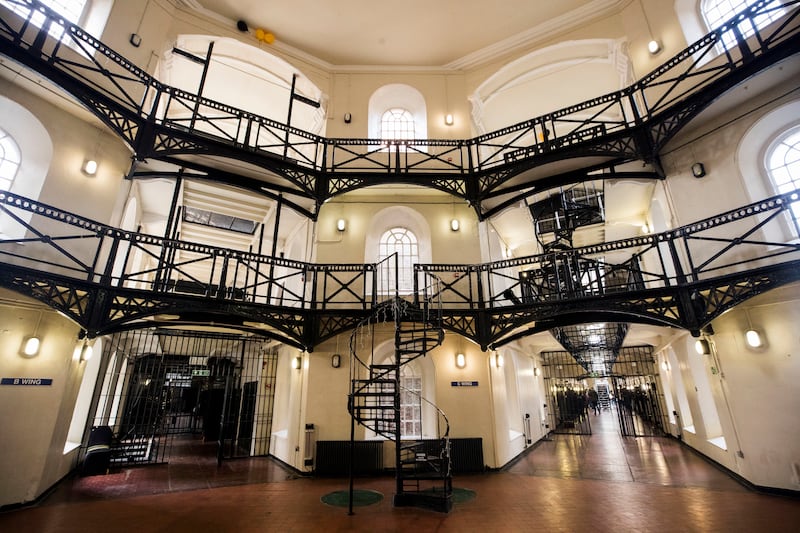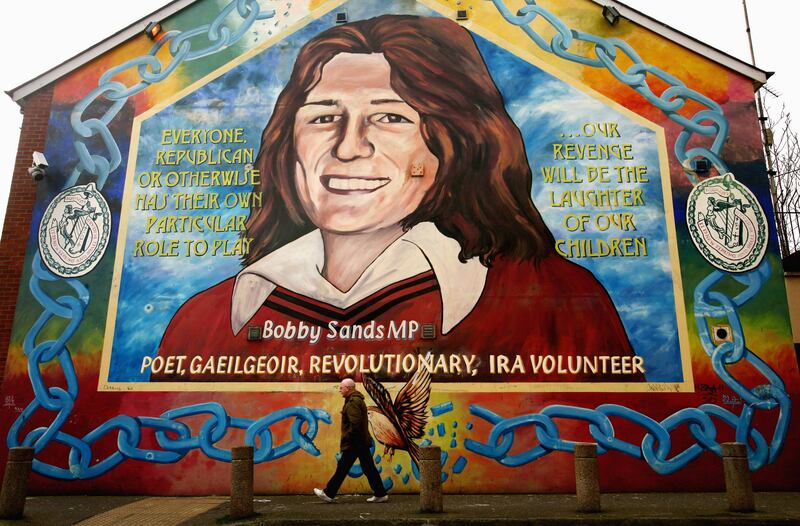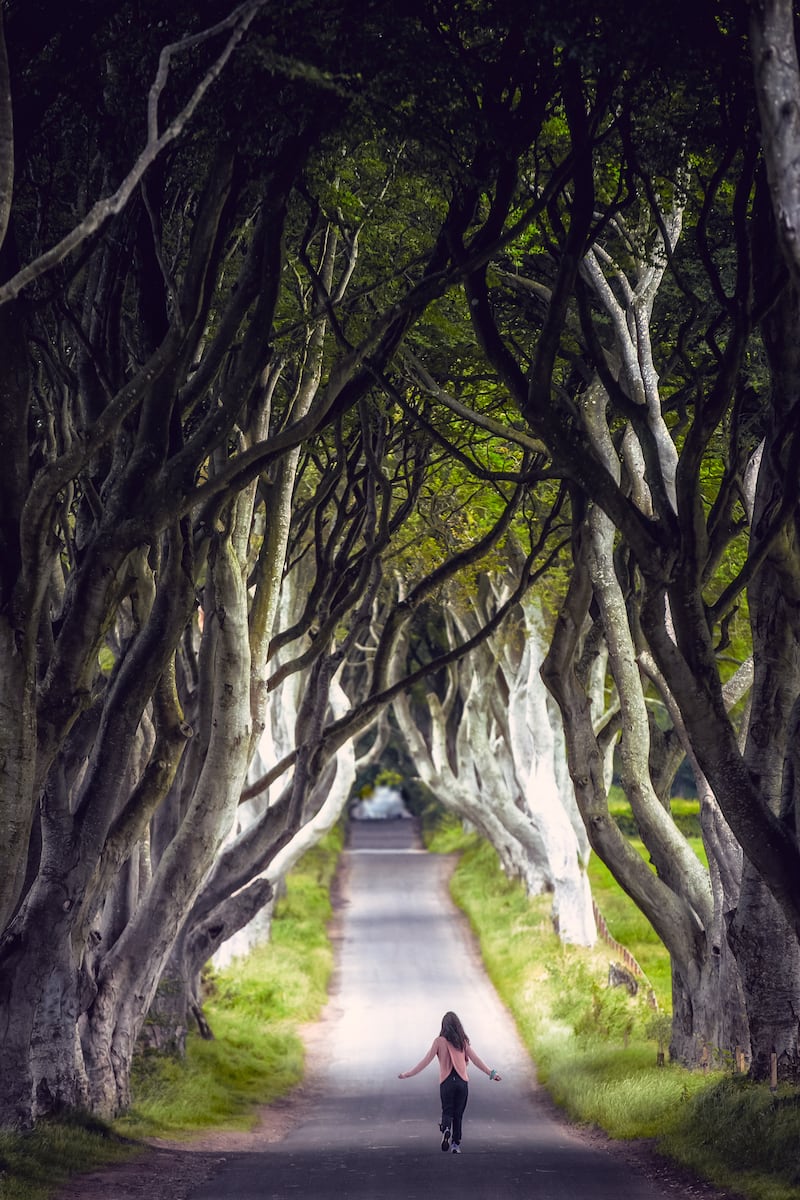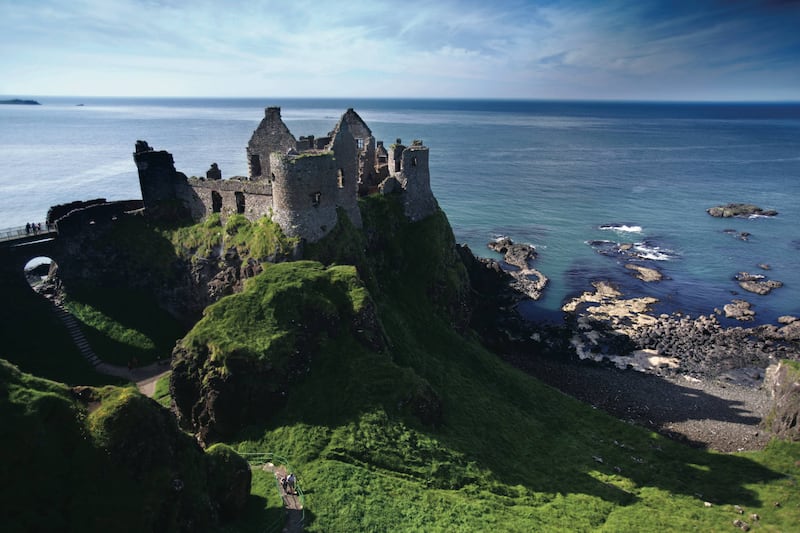A trip across the border offers a gateway to a different culture without the hassle of struggling with liquid allowances, decoding airline luggage sizes or trying to get around without a car.
Modern Belfast is safe, compact, and welcoming for all.
The city has transformed in recent decades into a vibrant melting pot of culture, food and history.
For those looking to sit back and relax, the Enterprise train service offers a speedy and convenient rail connection to the centre of Belfast from Dublin, but for more adventurous types wanting to get off the beaten track and explore, bringing the car is much recommended.
READ MORE
Top of most “must-see” lists for Belfast, you’ll find the Titanic Museum — and it’s not without good reason; the £90m museum truly is one of the North’s best visitor experiences.
Allocate at least two hours to really make the most of the exhibitions, which delve into the history of the famous ship and those who sailed upon her on her maiden voyage, how the fateful news was communicated back to land, and even reported in the press at the time.

Get a glimpse into the cabins of the first and lower classes and even stand on the slipways on which she was built and launched. Today, Belfast’s docks are no longer the shipbuilding capital of Europe, but the twin iconic Harland and Wolff gantry cranes, Samson and Goliath, continue to frame the Belfast cityscape — and you’ll not be going mad if you think they look like they’ve moved during your stay, as they do continue to be used for occasional heavy lifting in the dry dock.
While you’re there, you can continue your Titanic-themed day with lunch or afternoon tea at the Titanic Hotel across the plaza — the boutique hotel is a personal favourite in Belfast and is almost a museum of its own, with walls and artefacts from Harland and Wolff and White Star Line’s golden era.
The beautiful drawing rooms have been carefully restored and are where the Titanic and her sister ships were designed in the early 1900s.
While you’re waiting for your reservation, you can check out the telephone exchange where the call first came in to say the Titanic was sinking, and stroll down the office’s “Corridor of Power” before stepping into Thomas Andrews’ office.
If that’s whet your historical appetite, the Ulster Folk Museum is just a short jaunt outside the city and easily accessible by train from Belfast. Take the line to Bangor and get off at Cultra to take a step back to 1800s Ulster.
Walk the cobbled streets and pop to the shop “for some messages” or say hello to the residents of the cottages, many of which have been rebuilt stone by stone, to explore an Ireland of the not-so-distant past.
As a living museum, there is always lots to see with blacksmithing, basket weaving, linen-making, printing and carpentry demonstrations, among many more, which makes this a great option for those who haven’t quite got the interest or patience to do a lot of reading.
Little ones will also love W5 — an award-winning interactive discovery centre, which really brings science to life. Watch them be mind blown as they explore hands-on everything from how energy is generated to the reactions which make fireworks ‘bang’ to how optical illusions can trick our senses.
Those who like to learn on their feet will love Sean Napier’s 1798 Belfast walking tour, which takes you back to the revolutionary actions of the United Irishmen, which were key in shaping Ireland as it is today. Look out for the blue plaques nestled on walls around Cornmarket and the Cathedral Quarter, which mark some of the most significant locations from the time.
Another local favourite for history buffs is Crumlin Road Gaol, which allows you to follow in the footsteps of 25,000 prisoners as you make your way through Northern Ireland’s only Victorian-era prison, giving insight into the daily lives and routines of the prisoners incarcerated and the prison officers who worked in the gaol.

The tour includes the tunnel, which connects the gaol to the courthouse across the road, the Gaol circle, C-Wing, hangman’s cell, matron’s house and graveyard.
After all that, you’ll probably want something a little lighter in the evenings. You’ll get a real taste of the heartbeat of the North in the lively historical pubs like the Duke of York, Kelly’s Cellars, Whites Tavern, the Harp Bar, and even the Crown Liquor Saloon, and all four certainly make for the start of a mighty night’s craic.
Dating back to the 1880s, the National Trust-owned Liquor Saloon is popular with both tourists and locals alike.
Built to shield the pub’s more reserved customers from prying eyes during the austere Victorian period, the snugs feature the original gunmetal plates for striking matches and an antique bell system for getting the attention of staff. See if you can spot the fairies, pineapples, fleurs-de-lis and clowns in the ornate detailing on the walls, windows and ceilings.
Just like the icons in the snugs have deeper levels of meaning, they say a picture is worth a thousand words, and with around 2,000 murals dotted around the North, there are certainly plenty of tales to explore.
Murals tell the story of a changing city, from the old-style depicting historical struggles and conflict, to those recognising some of the most famous sons and daughters of Ulster. If you keep your eyes peeled and plan ahead, you’ll spot the Derry Girls gang in Derry, of course, in Belfast homages to snooker legend Alex Higgins, while music fans of a certain vintage will appreciate Terri Hooley peering out from between buildings in Belfast’s Shaftesbury Square.
Those interested in politics may particularly appreciate the iconic murals of Free Derry Corner, Bobby Sands, and perhaps even “King Billy on the Wall”.

A black taxi tour is probably the best way to see the highlights while also getting a personal take on life and politics in the north. You can ask the driver to tailor the tour if there is something you don’t want to miss or, alternatively, something you would rather skip. Although, it must be remembered that part of the fun of a trip to Belfast is the way the city presents clashing cultures and perspectives, often just streets apart.
If you’ve brought your own car, you can extend your trip even further north onto the cultural capital that is Derry — famed for its lively Halloween celebrations - or explore the rugged North Coast.
The likes of the Game of Thrones famed Dark Hedges — known to locals more quaintly as “the kissing trees” — are on the way, so stop off in Stranocum for a photo opportunity before making your way to the scenic Ballintoy Harbour. Brave the Carrick-a-Rede Rope Bridge if you dare, but be careful not to drop your phone whilst you pose for a selfie, as the bridge is known to sway quite dramatically in high winds!

Look out for the striking ruin of Dunluce Castle perched on the rocks as you meander along the rugged coast towards the Giants’ Causeway.
Of course, geologists will tell you the rocks were formed by cooling lava, but you can have fun telling your kids the ‘real story’ of Finn McCool and his Scots rival Benandonner.

The 40,000 basalt columns are the North’s only UNESCO World Heritage site. As you walk along the columns, see if you can spot “the giant’s boot”, “the harp”, and “the organ”, which are thought to have been 60 million years in the making.
The hexagon shape has become an emblem for the North, so look out for them in other places while you are on your travels.
After all that, you’ll certainly be ready for your pint by the fire in the Bushmills Inn!















